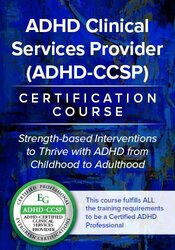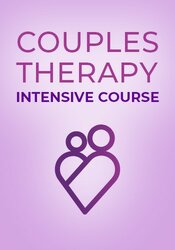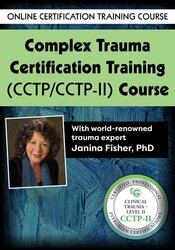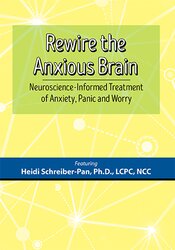Description
Watch Dr. Heidi Schreiber-Pan and learn her keys for successful anxiety treatment. Dr. Schreiber-Pan integrates brain-based strategies for calming the anxious mind with client communication techniques that motivate change in your clients. Heidi’s approach promotes adherence to treatment and strengthens the therapeutic alliance – which is essential when working with anxious, worried, traumatized, or obsessive clients. Dr. Schreiber-Pan will give you tools and techniques to:
- Identify and treat the roots of anxiety in both the amygdala and the cortex
- Explain “the language of the amygdala” in an accessible, straightforward way
- Identify how the cortex contributes to anxiety, and empower clients with strategies to resist anxiety-igniting cognitions
Purchase this training today and put the power of neuroplasticity to work for you and your anxious clients!
CPD
Planning Committee Disclosure - No relevant relationships
All members of the PESI, Inc. planning committee have provided disclosures of financial relationships with ineligible organizations and any relevant non-financial relationships prior to planning content for this activity. None of the committee members had relevant financial relationships with ineligible companies or other potentially biasing relationships to disclose to learners. For speaker disclosures, please see the faculty biography.
CPD
This online program is worth 6.25 hours CPD.
Speaker
Heidi Schreiber-Pan, PhD, LCPC, NCC, is a successful psychotherapist, author, clinical director and sought-after nationwide speaker on topics of resilience, anxiety, neuroscience, and occupational burnout. As an affiliate and former faculty member of Loyola University, Maryland, her past research has focused on resiliency and psychological well-being, including nature-based mental health.
Dr. Schreiber-Pan has worked with various organizations, schools and corporations to reduce stress on a communal level and to increase structural well-being through training in positive psychology as well as emotional intelligence coaching.
She has developed unique continuing education courses that combine established clinical methods such as CBT with innovative treatment approached including nature-based psychotherapy and neuro-counseling. She is the author of Taming the Anxious Mind: A Guidebook to Relieve Stress and Anxiety.
Speaker Disclosures:
Financial: Dr. Heidi Schreiber-Pan maintains a private practice and has an employment relationship with Chesapeake Mental Health Collaborative. She receives royalties as a published author. Dr. Schreiber-Pan receives a speaking honorarium, recording royalties, and book royalties from PESI, Inc. She has no relevant financial relationships with ineligible organizations.
Non-financial: Dr. Heidi Schreiber-Pan is a member of the American Counseling Association (ACA) and Association for Counselor Education and Supervision (ACES).
Additional Info
Access for Self-Study (Non-Interactive)
Access never expires for this product.
For a more detailed outline that includes times or durations of time, if needed, please contact cepesi@pesi.com
Questions?
Visit our FAQ page at www.pesi.com/faq or contact us at www.pesi.com/info
Objectives
- Ascertain the underlying neurological processes that impact anxious symptoms for clients.
- Develop client engagement in treatment using personalized goals and attending to the therapeutic relationship.
- Evaluate the differences between amygdala-based and cortex-based anxiety symptoms and identify how these symptoms inform treatment interventions.
- Communicate strategies for calming and training the amygdala in order to alleviate symptoms of anxiety.
- Implement methods for teaching clients to retrain the cortex so that anxiety is resisted rather than exacerbated.
- Analyze how psychotropic medication impacts neuroplasticity in the brain; identify related treatment implications.
Outline
Use Neuroscience in the Treatment of Anxiety
- Positives:
- We know more about anxiety-based disorders than any other disorders
- Science gives explanations, evidence, authority, destigmatizes difficulties
- Concerns:
- It can be difficult to explain, answer questions
- Clients may feel a lack of responsibility
- Oversimplification is inevitable
Enhancing Engagement in Treatment
- Don’t neglect the therapeutic relationship!
- Address the challenges of anxious clients
- Remember that strategies are effortful
- Guide the process using client’s goals
- Maintain motivation
Neuroplasticity
- Define Neuroplasticity in everyday language
- Therapy is about creating a new self
- ”Rewiring” as an accessible concept for change
- Re-consolidation: the modification of emotional memories
Identify Two Neural Pathways to Anxiety
- Amygdala – bottom-up triggering of emotion, physicality of anxiety
- Cortex – top-down emotion generation based in cognition
- Explain the two pathways to clients
- How anxiety is initiated in each pathway and how pathways influence each other
Client Friendly Explanations
- Use illustrations to create concrete understanding
- Fight/flight/freeze responses
- The “language of the amygdala”
- Anxiety and the cortex
- Help clients recognize the two pathways to anxiety
Neuroplasticity in the Amygdala (Essential for all Anxiety Disorders, PTSD, OCD, Depression)
- Sleep and the amygdala
- The influence of exercise
- Breathing techniques to reduce activation
- Relaxation, meditation, and yoga to modify responses
- Exposure as opportunities for the amygdala to learn
- Combatting avoidance
- When anxiety indicates that the amygdala can learn new responses
- Push through anxiety to change the amygdala
Neuroplasticity in the Cortex (Essential for GAD, SAD, OCD, PTSD, Depression)
- ”Survival of the busiest” principle – strengthen or weaken specific circuitry
- The healthy (adaptive) use of worry in the cortex
- ”You can’t erase: You must replace”
- Recognize and modify the impact of uncertainty
- Training correct uses of distraction
- Left hemisphere techniques – cognitive defusion, coping thoughts, fighting anticipation
- Right hemisphere techniques – imagery, music
- Mindfulness and anxiety resistances
Neuroplasticity and Medications for Anxiety Disorders, OCD, PTSD, Depression
- Medication’s effects in the rewiring process
- The myth of the chemical imbalance
- The danger of sedating the brain with benzodiazepines
- Promoting neuroplasticity with SSRIs, SNRIs
- The effectiveness of CBT and meds
Moving Beyond Diagnostic Categories to Focus on Anxiety Pathways
- Anxiety is a component of many diagnoses (depression, substance abuse, etc.)
- Amygdala – and cortex-based techniques help in other disorders
- Targeting brain-based symptoms rather than disorders
- Worry, obsessions, rumination respond to similar cortex-based techniques
- Panic, phobic responses, and compulsions respond to amygdala-based techniques
Research, Risks and Limitations
- Empirical versus clinical and anecdotal evidence
- Clinical considerations for specific clients and settings
- Efficacy of particular interventions may vary
Target Audience
- Social Workers
- Psychologists
- Psychiatrists
- Counsellors
- Case Managers
- Marriage and Family Therapists
- Occupational Therapists
- Occupational Therapy Assistants
- Speech Language Pathologists
- Addiction Counsellors
- Therapists
- Nurses
- Physicians
- Other Mental Health Professionals
Reviews
Overall:
5
Total Reviews: 5
















